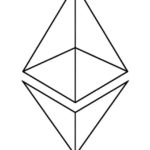Revisiting the Concept of Fair Launch in Crypto
The idea of a fair launch in crypto once symbolized equality and community-driven growth.however, in 2025, this concept has transformed into a marketing buzzword. The core values of fairness and user alignment have been watered down to suit various token distribution schemes.
Bitcoin, frequently enough cited as the original fair launch, had its flaws. Early mining concentration and wealth asymmetry showed it wasn’t entirely fair. Satoshi Nakamoto controlled a majority of the network initially, and early miners accumulated a notable supply. Despite these issues, Bitcoin’s economics aligned with its product, rewarding participants equally for their contributions.
DeFi’s 2020 fair launch hype quickly faded.Projects like Yearn Finance promised fair token distribution, but liquidity farming became a financialized activity. These launches were also prone to vampire attacks, where new forks offered higher yields, benefiting early insiders repeatedly.
Modern blockchains often rely on presales and insider allocations, creating deferred inflation. Ethereum’s ICO in 2015 raised over $18 million before any blocks were mined. Solana, Aptos, and Sui followed this pattern, allocating vast percentages to insiders.
True fair launch requires equal treatment of contributions over time, no insider carve-outs, and value built on real utility. The smallest unit of contribution should be rewarded equally, whether you joined on day one or years later. This ensures the network treats all contributors as equals in perpetuity.
Key questions to determine a fair launch include:
- Is the smallest unit of contribution clearly defined and open to anyone?
- Are equal contributions rewarded equally over time?
- Are insider/team/investor allocations zero at the network layer?








